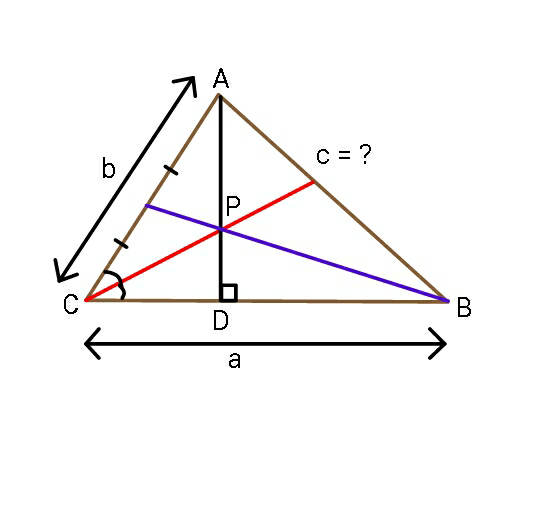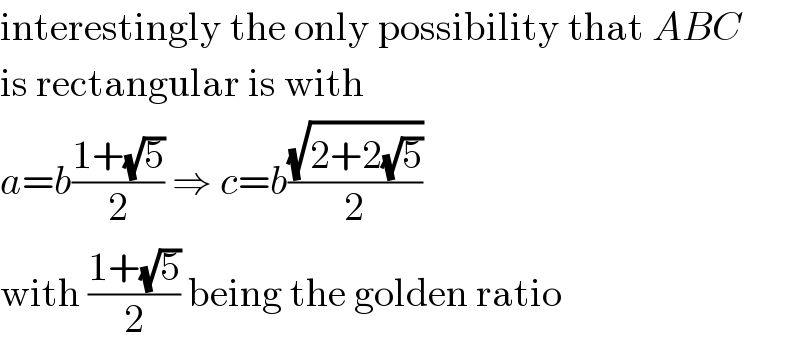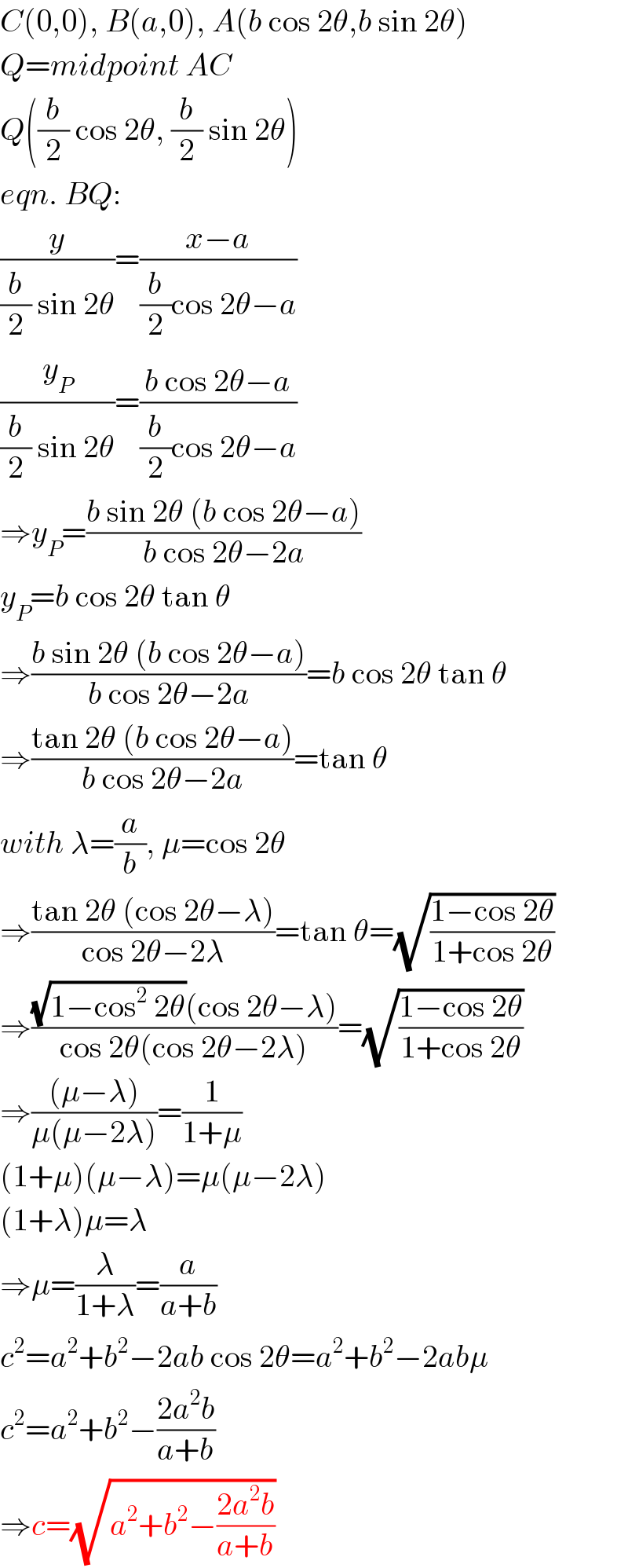
Question and Answers Forum
Question Number 49987 by ajfour last updated on 12/Dec/18

Commented by ajfour last updated on 12/Dec/18

Commented by MJS last updated on 13/Dec/18

Commented by ajfour last updated on 13/Dec/18

Commented by MJS last updated on 13/Dec/18

Answered by mr W last updated on 13/Dec/18

Commented by ajfour last updated on 13/Dec/18

